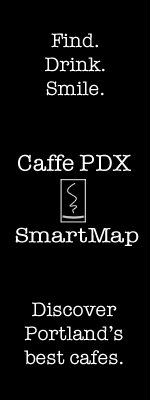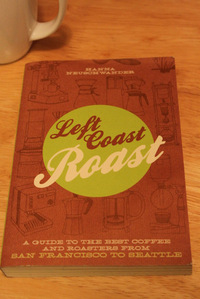Thinking about a West Coast coffee tour? Here’s your guide.
 Tuesday, December 11, 2012 at 3:45PM
Tuesday, December 11, 2012 at 3:45PM If you want to experience the best coffee the West Coast has to offer, but aren’t sure where to start, check out Left Coast Roast: A Guide to the Best Coffee And Roasters from San Francisco to Seattle, by Hanna Neuschwander. The book profiles fifty-five coffee roasters in Washington, Oregon and California and contains a coffee education section packed with tips about how to navigate specialty coffee.
Neuschwander sat down with me to talk coffee and tell her story. Her eyes flickered with enthusiasm as she recounted her research.
Originally from Spokane, Washington, Neuschwander moved to the other Washington (D.C.) when she was eight years old. She returned to the Pacific Northwest in 2006, following a six-month road trip around North America that doubled as a search for a new home. When she arrived in Portland, Neuschwander was working as a freelance editor for a non-profit publisher, but tired of being alone at home all day, she soon found a job as a barista at Extracto, a then-new micro-roaster on Northeast Killingsworth Avenue.
“It was just the right environment for me to learn about coffee. I didn’t know anything about it at that point,” Neuschwander recalled. “It’s a family business, and I very much felt like I was part of that family.”
When Neuschwander left Extracto for her current position as director of communications for the graduate school of education and counseling at Lewis and Clark College, she did not want to leave coffee completely, so she started writing about it.
“Writing about coffee became a way for me to stay connected to both the community and also the world of ideas about coffee,” she said. Neuschwander’s articles have appeared in several publications, including Barista, Roast, Willamette Week and MIX Magazine. When Timber Press approached her to write a guide to coffee roasters on the West Coast, Neuschwander took the opportunity. After negotiating the structure and layout with the Portland-based publisher, she spent six months researching and writing the book.
Her travels increased her enthusiasm for coffee and brought some of the differences between cities into focus. There is not just one “West Coast” style in coffee.
“One thing that Seattle continues to do well that San Francisco and Portland don’t do that well is that it’s an espresso town. Espresso Vivace is a perfect example of this,” explained Neuschwander. “David Schomer has spent thirty years perfecting one flavor profile and just doing it right. It’s amazing—they have the most loyal customer base of any coffee company I have ever seen. It’s insane. There’s lines out the door every single morning.”
Neuschwander would not say who had the best coffee, although she did mention several Portland roasters when I asked her about it.
“People ask me all the time what’s my favorite place,” she said. “I’m not being disingenuous when I say I don’t have a favorite. What’s exciting to me is the fact that you can go to Spella and get a traditional Italian espresso served on a lever machine, and they’ve got affogato. And you can go to the Stumptown Annex and pick from one of thirty pretty amazing single-origins. You can go to Heart and they’re going to have some crazy single-origin espressos. That’s what exciting.”
Neuschwander still marvels at the speed at which the specialty coffee industry is growing.
“I was in San Francisco a couple weeks ago, and over the course of the two days I was there, seven new roasters in Oakland started up. The roasters are very small, but things are happening. There’s something kind of special that’s still happening on the West Coast that’s different than the East Coast.”
Left Coast Roast takes some of the mystery—but not the mystique—out of specialty coffee. With friendly prose and an abundance of illustrations, Neuschwander gently and clearly educates her readers on sourcing, roasting, brewing and, of course, searching out better coffee. She successfully makes the beverage more accessible to both the average coffee drinker and to those who want a deeper understanding of “that little marvel in your cup.”
[Side note: Hanna and I met for our conversation at Cascade Barrel House, a brewery in Southeast Portland famous for its lambic (sour) beers. A few minutes into the interview, Cascade’s owner rang a bell to get everyone’s attention. He announced he was going to break into a new barrel, which called for a celebration. The brew master for this particular barrel had the honor of pounding the tap into the barrel with a large wooden mallet, similar to the kind you might see at a carnival’s high striker (test of strength).
Being a taste aficionado but not much of a beer drinker, it was interesting to hear the owner talk about his product. He boasted of the new ale’s “creamy bitterness, candied marzipan and maraschino cherry” flavors that were “off the charts.” The similarity to coffee was apparent, and I couldn’t help but think that, like coffee people, beer people are excited about what they’re doing.]





